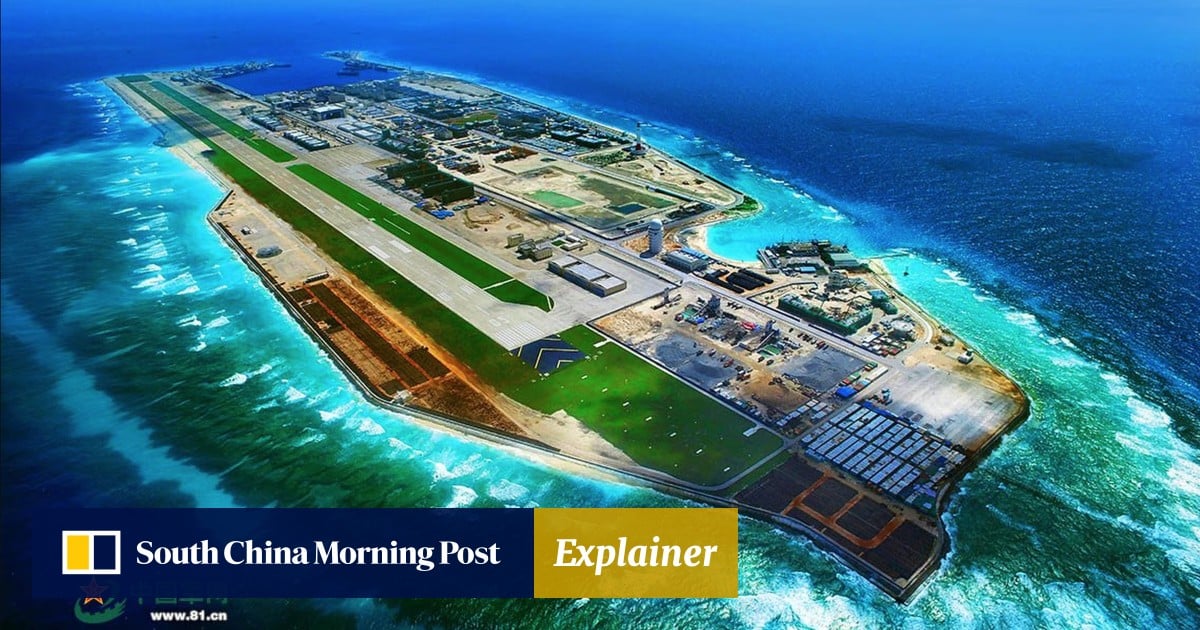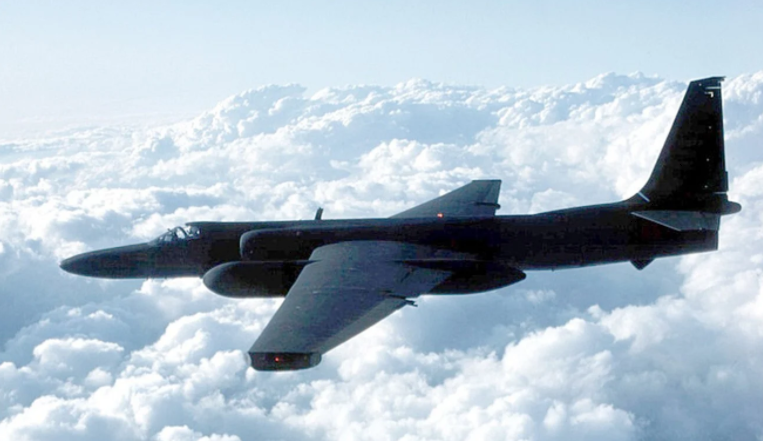
China’s Ministry of Transport opened a maritime rescue center on Fiery Cross Reef in the South China Sea in early 2019. (Source: People’s Daily)
China Says US Flew Spy Plane Into No-Fly Zone: Defense Ministry Warns Move Risked ‘Misunderstanding’
Jason Ditz / AntiWar.com
(August 25, 2020) — China has issued a statement to US officials complaining about a US spy plane overflight into a Chinese-established no-fly zone, the latest in a series of incidents mounting tensions between the two nations.
The US spy plane, a U-2, was accused of going into a no-fly zone set up during Chinese military operations, and Chinese officials suggest that the plane was spying on the exercises, and hindered exercises with its unwelcome presence.
China’s Defense Ministry warned the presence of a US plane risked a “misunderstanding” that could’ve caused an incident. The US has not responded to what they were doing in the area.
Nor are they likely to. US spy planes have been in multiple incidents with Russia and China in recent months, and have not commented on what they thought they were doing in any of them. All of this is raising tension in both areas, and the risks that an interception could escalate into a more serious encounter.
Missiles Fired after US Spy Plane Interrupts China’s Drills

The missiles were fired one day after a Lockheed U-2 (pictured) flew through the area. (Photo: Wikimedia)
(August 26, 2020) — China has fired missiles into disputed territory in the South China Sea today, which officials say are meant to be a “warning” to the US after a U-2 spy plane intruded on China’s naval drill in the area, entering a no-fly zone.
One of the missiles was a DF-26 missile, a nuclear-capable missile, and the other a DF-21D, an anti-ship ballistic missile. China said the firing was meant to show they can deny access to the South China Sea militarily.
The US responded by blacklisting a number of Chinese officials accused of involvement in the South China Sea, as well as Chinese executives whose companies are active there. Secretary of State Mike Pompeo says the blacklist included a travel ban.
This is just the latest sign of tensions between the US and China. The US rejects all Chinese claims in the South China Sea, and regularly sends ships into the area to prove they can send ships there in violation of the maritime claims.
Chinese Military Fires ‘Aircraft-carrier Killer’ Missile into South China Sea in ‘Warning to the United States’
Peoples Liberation Army flexes muscle in response to continued US testing of Beijing’s bottom lines
Kristin Huang / South China Morning Post
(August 26,, 2020) — China launched two missiles, including an “aircraft-carrier killer”, into the South China Sea on Wednesday morning, a source close to the Chinese military said, sending a clear warning to the United States.
The move came one day after China said a US U-2 spy plane entered a no-fly zone without permission during a Chinese live-fire naval drill in the Bohai Sea off its north coast.
One of the missiles, a DF-26B, was launched from the northwestern province of Qinghai, while the other, a DF-21D, lifted off from Zhejiang province in the east.
Both were fired into an area between Hainan province and the Paracel Islands, the source said.
The landing areas were within a zone that Hainan maritime safety authorities said on Friday would be off limits because of military exercises from Monday to Saturday.
The DF-26 dual-capable missile is a type of weapon banned by the Intermediate-Range Nuclear Forces Treaty signed by the US and Soviet Union towards the end of the Cold War. When the US withdrew from the treaty last year, it cited China’s deployment of such weapons as justification.
The DF-26 has a range of 4,000km (2,485 miles) and can be used in nuclear or conventional strikes against ground and naval targets.
The DF-21 has a range of around 1,800 km, with state media describing the most advanced in the series, the DF-21D, as the world’s first anti-ship ballistic missile.
Hong Kong-based warship joins drill in South China Sea
The source said the missile launch was aimed at improving China’s ability to deny other forces access to the South China Sea, a disputed region.
“This is China’s response to the potential risks brought by the increasingly frequent incoming US warplanes and military vessels in the South China Sea,” the source said. “China doesn’t want the neighbouring countries to misunderstand Beijing’s goals.”
China’s military launches a drill on nuclear emergency rescue operations
Song Zhongping, a Hong Kong-based military commentator, said the missile launches were clearly meant to send a signal to the United States.
“The US continues to test China’s bottom line in Taiwan and South China Sea issues, and this pushed China to showcase its military strength to let Washington know that even US aircraft carriers cannot flex their full muscle near China’s coast,” Song said.
China’s defence ministry did not immediately respond to a request for comment on the launches.
South China Sea: The DIspute that Could Start a Military Conflict
(August 11, 2020) — The South China Sea Is one of the world’s busiest waterways and rich in natural resources. It is also one of the most contested maritime areas, with various countries, including China, Vietnam and the Philippines claiming sovereignty.
The United States is not a claimant but it does have strategic interests in the area and its military conducts regular patrols.
Tensions escalated in mid-July when, for the first time, the US formally opposed China’s claim to almost all of the waters, calling it “completely unlawful” under the international law of the sea.
Analysts have warned that the dispute could be a tipping point for military conflict. The Chinese air force of the People’s Liberation Army has conducted live-fire drills in the area as recently as July in response to the US Navy’s own drills and freedom-of-navigation operations.
But tensions have simmered for some time. Satellite images show that China has built artificial islands
and military facilities in parts of the South China Sea, much to the opposition of other claimants.
In 2016, an international tribunal in The Hague found that China violated the Philippines’ sovereign rights in the waters by interfering with fishing and oil exploration and building islands on marine features such as reefs.
Chinese President Xi Jinping rejected the ruling and said China’s territorial sovereignty and maritime interests in the waters would not be affected.
What Does China Claim?
China, the Philippines, Vietnam, Malaysia, Brunei and Taiwan all claim part of the South China Sea, using various historical and geographic arguments as justifications.
China claims a vast area of the sea within its “nine-dash line”, which stretches up to 2,000 km (1,240 miles) from the Chinese mainland to waters close to Indonesia and Malaysia. China has erected military facilities and stationed troops on artificial islands it built in the area, although it insists its intentions are peaceful.
Vietnam claims sovereignty over the Paracel and Spratly islands, while the Philippines asserts ownership of the Spratly archipelago and the Scarborough Shoal. The Paracels are known in China as the Xisha and Vietnam as the Hoang Sa, and the Spratlys the Nansha.
Brunei and Malaysia claim sovereignty over southern parts of the sea and some of the Spratly Islands.
The Southeast Asian claimants say the Chinese boundary encroaches on their territorial waters as set out by international law, while Taiwan – viewed by Beijing as a renegade province – has a similar claim as the Chinese mainland.
Under the United Nations Convention on the Law of the Sea (Unclos), each country has the right to exploit natural resources within its exclusive economic zone, which extends 200 nautical miles (370km) from shore.
Why is the Sea Worth Contesting?
The South China Sea is a key commercial thoroughfare connecting Asia with Europe and Africa, and is believed to have major reserves of natural gas and oil.
One-third of global shipping, or about US$3.37 trillion in international trade, passes through the South China Sea each year, including about 80 per cent of the oil imported by China, the world’s second-largest consumer of the resource.
The US Energy Information Administration estimates the area contains at least 11 billion barrels of oil and 190 trillion cubic feet of natural gas. Other estimates are as high as 22 billion barrels of oil and 290 trillion cubic feet of gas.
The disputed water also accounts for 10 per cent of fish caught globally, making it a key source of food for hundreds of millions of people.
Recent Developments
Tensions have been rising in recent months, with other claimants and the US accusing China of worsening relations by increasing its infrastructure and military build-up in the area.
In mid-July, Washington said “Beijing’s claims to offshore resources across most of the South China Sea are completely unlawful” and threatened to sanction Chinese officials and companies that pursued “illegal” claims in the contested waters.
The US has stepped up its military presence, sending in warships and aircraft to keep tabs on China’s activities.
Although the US does not officially align with any of the claimants, it has wide-ranging security commitments in East Asia, and is allied with several countries bordering the sea, including the Philippines, Singapore and Vietnam.
People’s Liberation Army Navy soldiers patrol Woody Island, in the Paracels Archipelago. Photo: Reuters
The sea is also a vital trade route in the global supply chain, used by American companies that make goods in the region.
The US has conducted freedom-of-navigation operations, designed to challenge what it considers excessive claims and grant the free passage of commercial ships in its waters.
In 2019, US Navy vessels sailed nine times within 12 nautical miles of features claimed or occupied by China – the highest number of patrols since Beijing controversially began constructing artificial islands around disputed reefs in the waterway in 2014.
Is There Progress on a Resolution?
The Association of Southeast Asian Nations has been working with China on an official code of conduct to avoid clashes in the disputed waters. A binding agreement had been discussed for years to little avail but in November 2018 China said it hoped the consultation would be completed in three years.
In 2013, the Philippines filed a case against China in the Permanent Court of Arbitration in The Hague based on Unclos.
The tribunal ruled in 2016 that Beijing had no historical rights to the waters within its nine-dash line. But China, which did not take part in the proceedings, refused to recognise the decision.
Southeast Asian nations have traditionally rejected looking for a bilateral solution with China, the region’s main economic and military power. Despite this, one year after the landmark ruling against China’s territorial claims, Philippine President Rodrigo Duterte agreed to resolve the dispute with China through bilateral talks.
In 2019, Vietnam said it could explore legal action to assert its maritime claim although it preferred to do so through negotiations.
Posted in accordance with Title 17, Section 107, US Code, for noncommercial, educational purposes.